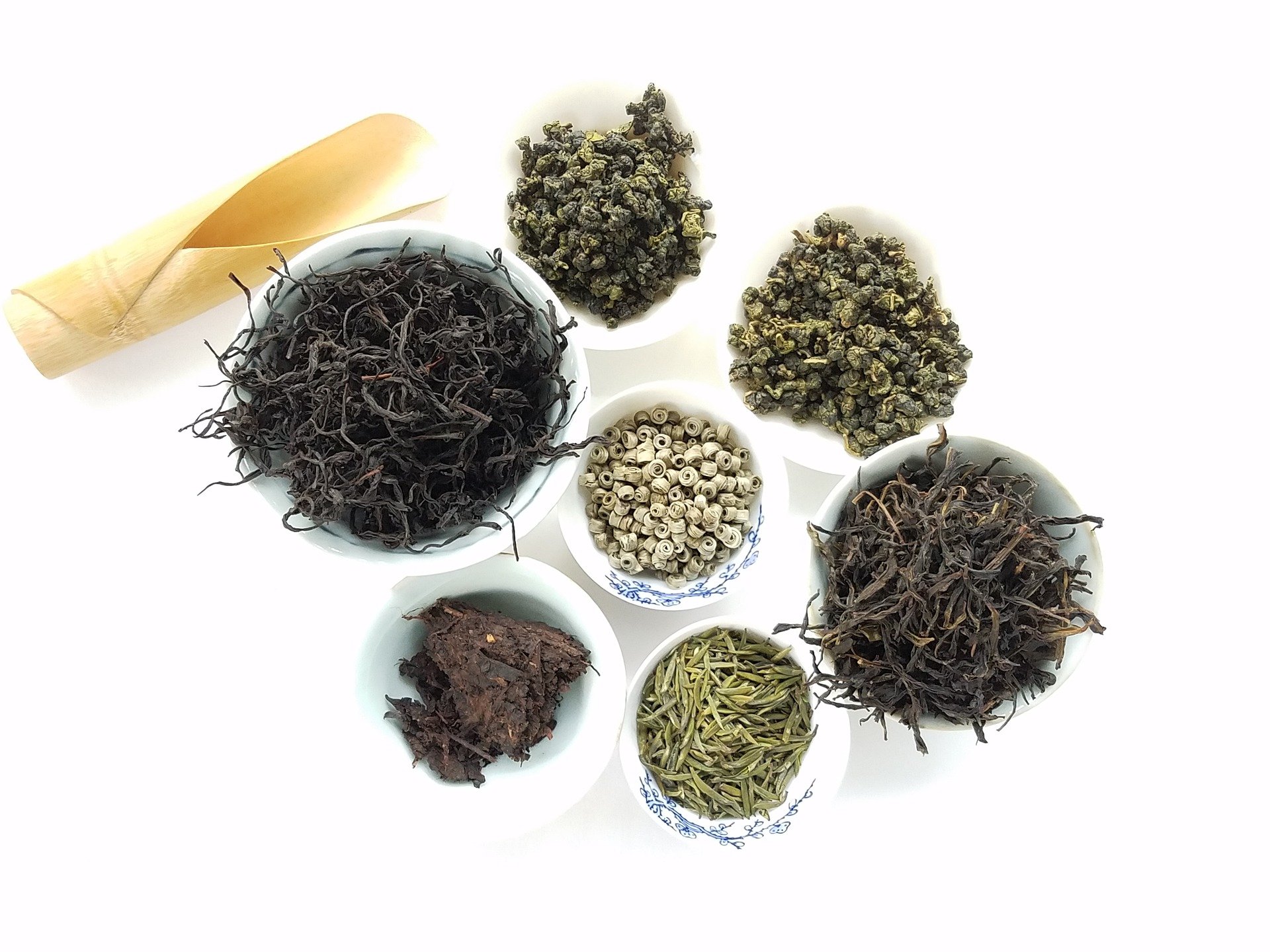Want to enjoy the aroma of tea? In the article “Best Chinese Teas: Ranking 2020” you can find useful information to help you make the best choice.
For those who want to choose the best Chinese teas, we have prepared a special rating. With the help of this rating, you can choose for yourself the tea that will be the perfect start to the day or will give pleasure in the evening. As you know, tea is one of the most ancient drinks. It is unique and diverse. Tea can invigorate or relax, delight with a delicate or rich taste. After all, tea is healthy – if it is good quality Chinese tea. And for this amazing drink, ratings are compiled, because there are many varieties of it, and I want to choose the best Chinese tea. Take your pick.
Content
The best Chinese teas: a review of the TOP 20+
- Chinese teas names 中国 茶 名称
- Chinese tea “Baihao Yinzhen” 白毫 银针
- Shu Chengnian Chinese Tea 陈年 熟 普洱
- Chinese Wild Puer Tea 熟 普洱
- Chinese tea “Liuan Guapian” 六安 瓜片
- Chinese tea “Qimen Hongcha” 祁门 红茶
- Chinese tea “Sheng Puerh White Wild” 野生 普洱 白茶
- Junshan Yinzhen Chinese Tea 君山 银针
- Chinese tea “Wu Yan Cha” 武夷 岩茶
- Shu Fulu Chinese Tea 福 鹿 乌龙茶
- Huangshan Maofeng Chinese Tea 黄山 毛峰
- Chinese tea “Tieguanyin” 铁 观音
- Chinese tea “Bilochun” 碧螺春
- Xi Hu Long Jing Chinese Tea 西湖 龙井茶
- Chinese tea “Oolong Da Hong Pao” 乌龙 大 红袍
The best Chinese teas – types of 中国 茶叶 品种
- White tea 白茶
- Green tea 绿茶
- Yellow tea 黄 茶
- Oolong Tea 乌龙茶
- Red tea 红茶
- Pu-erh tea 普洱茶
Chinese milk tea 中国 奶茶: a special kind
- The best Chinese teas: what determines the taste of tea?
- Chinese tea: tea gallery
- The best Chinese teas for beauty connoisseurs
- Best Chinese Teas: Ranked 2020
- Summarize
The best Chinese teas: a review of the TOP 20+
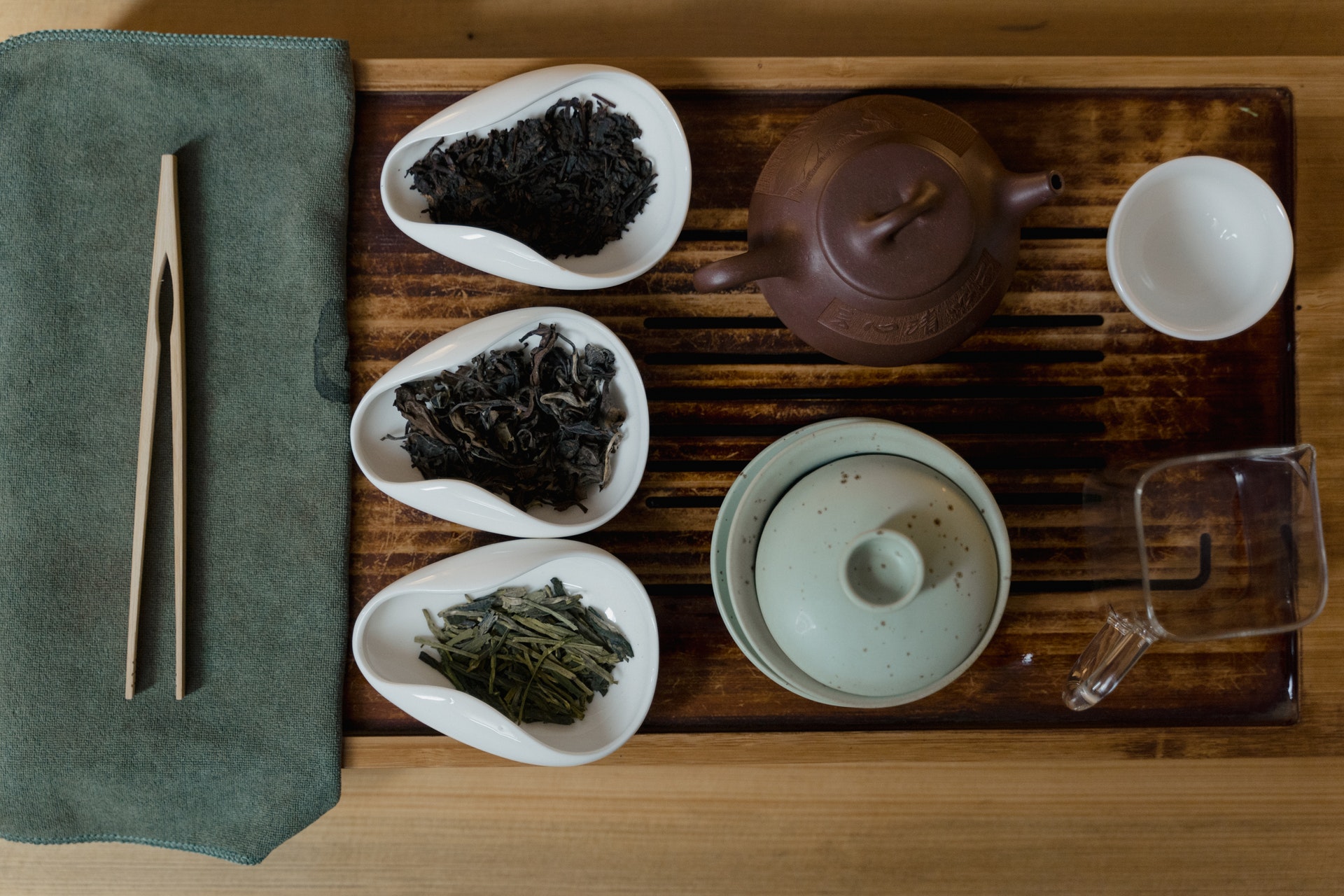
Since there are many different types of Chinese tea, and people have different tastes, this rating is for informational purposes only. If you prefer red tea 红茶, you will not be interested in green tea 绿茶 or pu-erh 普洱茶. Accordingly, connoisseurs of the subtle taste of white tea ят will skip the rich red tea 红茶.
Chinese teas names 中国 茶 名称
Chinese tea 中国 茶 is special in every sense. Not only the color and taste of the drink, but also its name is mesmerizing. At first glance, the name is complex and strange, albeit poetic, but it always has a specific meaning. Chinese teas have complex names. For example, by the name of Chinese tea 中国 茶, you can learn about its features, the place of its production. Sometimes – about the taste or even about the legend associated with this particular variety.
Chinese tea “Baihao Yinzhen” 白毫 银针
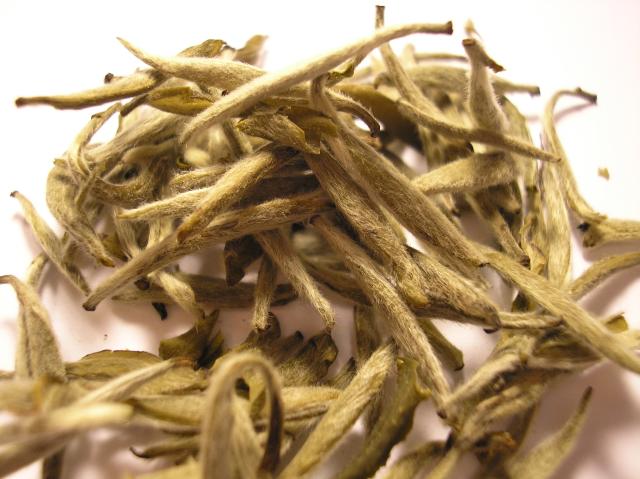
Image by: CC BY-SA 3.0 / Iateasquirrel
So, Chinese tea “Baihao Yinzhen” 白毫 银针. The name from Chinese translates as “Silver needles with white hairs.” The variety got such a name for a reason – it is made from the most delicate, more fleecy tea buds. It is white tea 白茶, which produces a light, golden-colored infusion with a delicate floral aroma and mild taste. The infusion will delight you with a warm, melon-honey tint.
Shu Chengnian Chinese Tea 陈年 熟 普洱
(no photo)
One of the best pu-erh 普洱茶. The full name of Shu Chengnian tea is 陈年 熟 普洱. This Chinese tea is made from the mature leaves of tea trees grown outside the plantations. The variety gives a dark infusion with a woody-earthy aroma, in which you can feel light herbaceous notes. The taste of Chinese tea “Shu Chengnyan” is strong, with a berry tinge. And the aftertaste is unexpectedly sweet, lollipop.
Wild Pu’er Chinese Tea 野生 熟 普洱
Wild Pu-Erh tea is also made from the leaves of wild tea trees. Collect raw materials in the mountains of Yunnan province 云南省. Tea of deep burgundy hue, with a woody-nutty aroma. And the taste of Chinese tea “Wild Puer” will delight you with astringency, richness and pleasant aftertaste with hints of prunes. The full name of Chinese tea is 野生 熟 普洱.
Chinese tea “Liuan Guapian” 六安 瓜片
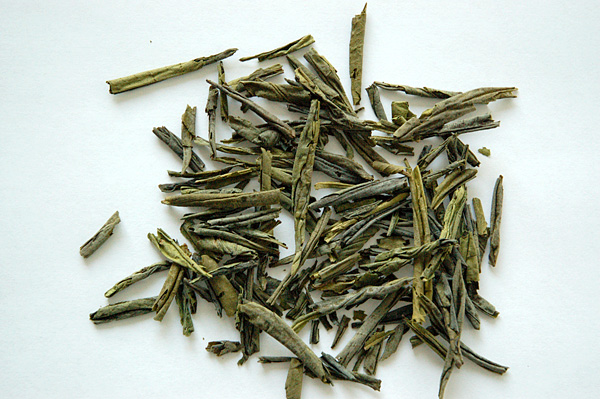
Image by: CC BY-SA 3.0
Or “Pumpkin Seeds from Liu An”. This is green tea 绿茶, which is produced in Anhui province 安徽省. Its production method is different from conventional green tea production technology. The leaves are baked, and only the second leaves are taken, from which the central vein is removed. Therefore, the tea gives an infusion with a characteristic aroma of toasted seeds. The color of the drink is rich, emerald. The taste is delicate, multifaceted and rich.
Chinese tea “Qimen Hongcha” 祁门 红茶
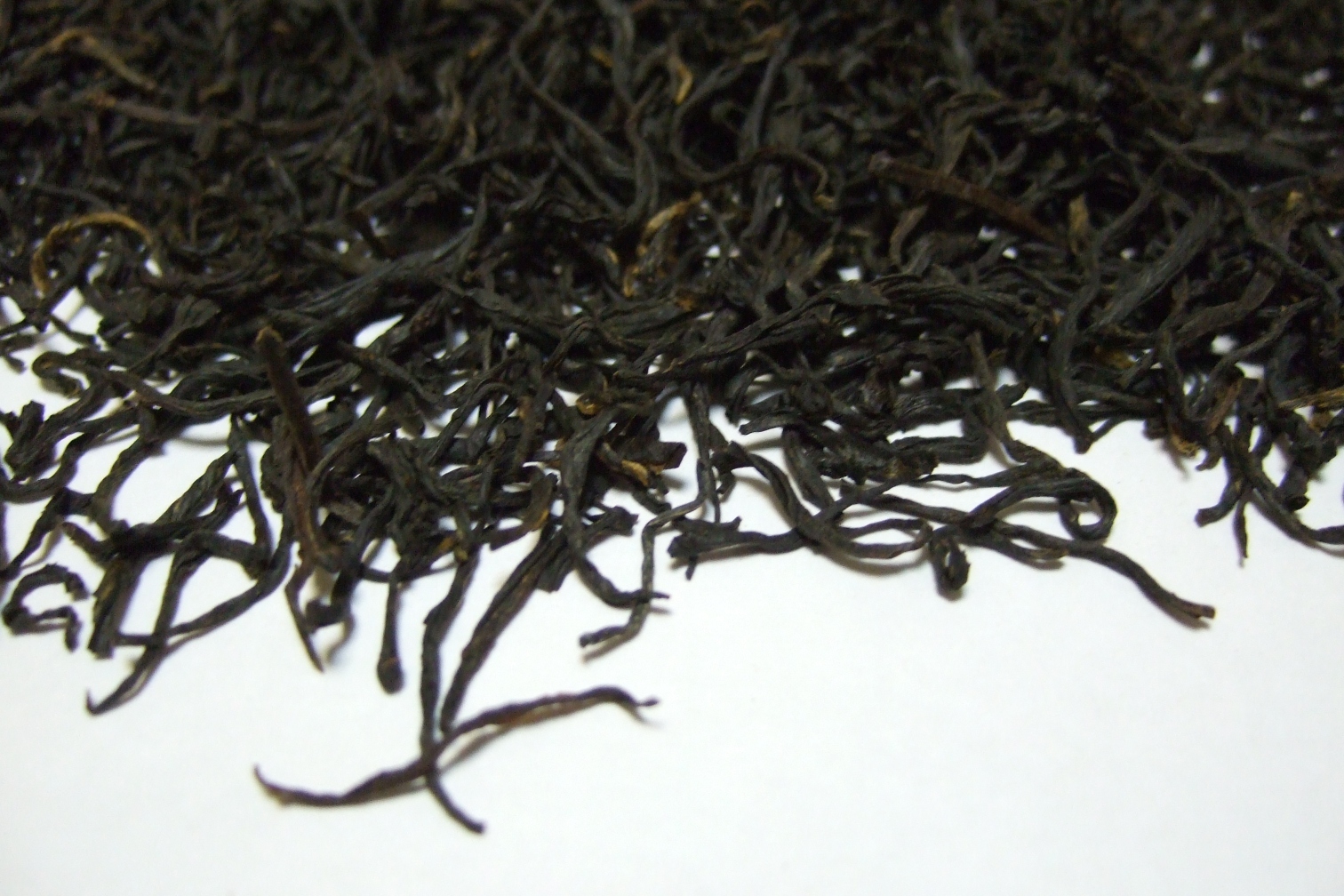
Image by: CC BY-SA 4.0 Whiteness
Or Keemun. This is the most common variety of Chinese red tea 红茶. In Europa, this type of Chinese tea is referred to as black tea. The full name of Chinese tea is 祁门 红茶. It is also made in Anhui province 安徽省. The production process is complex, only craftsmen with extensive experience are allowed to it. Dry tea leaves have a warm aroma with hints of honey. The infusion is ruby red in color, with spicy and bready notes, a hint of pine needles and honey. The taste is rich, with notes of dried fruits, wine, cinnamon.
Chinese tea “Sheng Pu-erh White Wild” 野生 普洱 白茶
Pu-erh too, but “young”. The full name of this Chinese tea is 野生 普洱 白茶. The peculiarity of the variety is that it is made from young leaves. The infusion is lighter than that of Shu Pu-erh and has a herbal aroma with floral tints. The taste is more subtle, tart, with fruity-sweet notes. The variety is more popular with women and men who like a combination of richness and subtlety of taste.
Junshan Yinzhen Chinese Tea 君山 银针

Image by: CC BY-SA 3.0 / Jushan Yinzhen
Chinese tea “Junshan Yinzhen” in translation – “Silver needles from the Junshan mountains (mountains of the ruler)”. Yellow tea 黄 茶, which is made from the buds of tea bushes. And not any – only those that grow on the island of Dongting Lake 洞庭湖. The buds are harvested twice a year, after being harvested they are fermented. But not in the air, but over embers. Therefore, the variety has a languid aroma with a touch of spices, a deep multifaceted taste.
Chinese tea “Wu Yan Cha” 武夷 岩茶
(no photo)
Oolong variety ун, which is produced in Fujian province 福建省. The full name of this type of Chinese tea is 武夷 岩茶. Tea trees grow in rocky terrain, and the mountainous mild climate with high humidity, acidic soil gives the tea leaves a special flavor. Like all varieties of oolong 乌龙茶, tea leaves undergo incomplete fermentation, which gives the drink softness, sophistication and versatility of taste.
Shu Fulu Chinese tea 福 鹿 乌龙茶
(no photo)
The best Chinese Pu-erh tea, which will be liked by many, as it combines strength, richness of taste, but without earthy nuances. The name translates as “Happy Deer”. The name in Chinese is 福 乌龙茶 乌龙茶. Grown on the island of Taiwan 台湾. Tea infusion – amber-red, intense color with woody herbaceous aroma. The taste of the drink is deep, with a slight astringency, hints of nut and prune.
Huangshan Maofeng Chinese Tea 黄山 毛峰
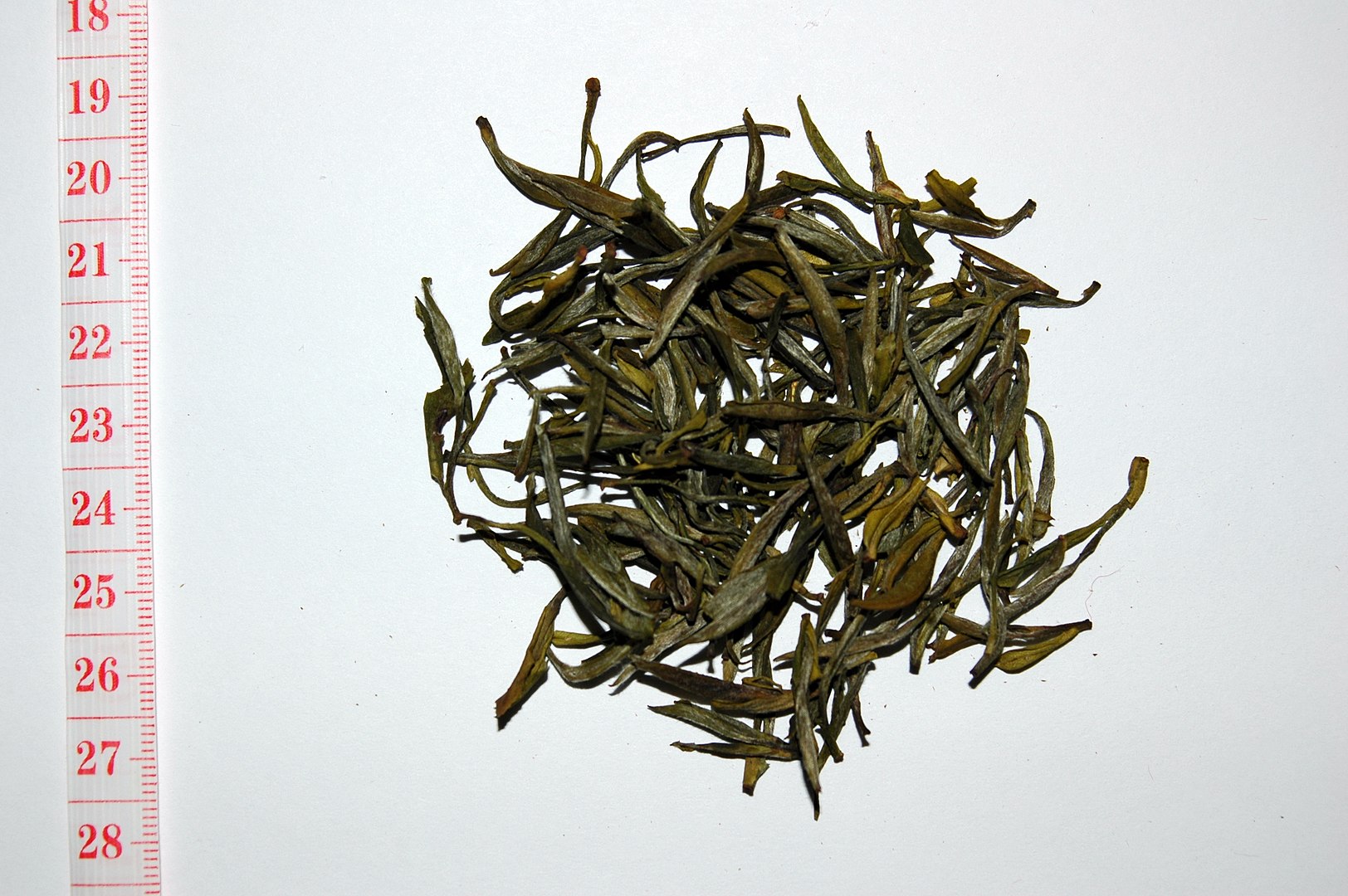
Image by: CC BY-SA 3.0 / Verylikerice
Green tea 绿茶 with a complex name, which translates as “Fuzzy Peaks of the Yellow Mountains.” The full Chinese name is 黄山 毛峰. The name speaks both of the area where the tea grows, and what leaves are used for production – young leaves, strictly the same in length. This variety is one of the oldest, more than 1000 years old. The infusion has a complex aroma and taste, with notes of orchid aroma, other flowers, shades of apricot and peach, citrus.
Chinese tea “Tieguanyin” 铁 观音
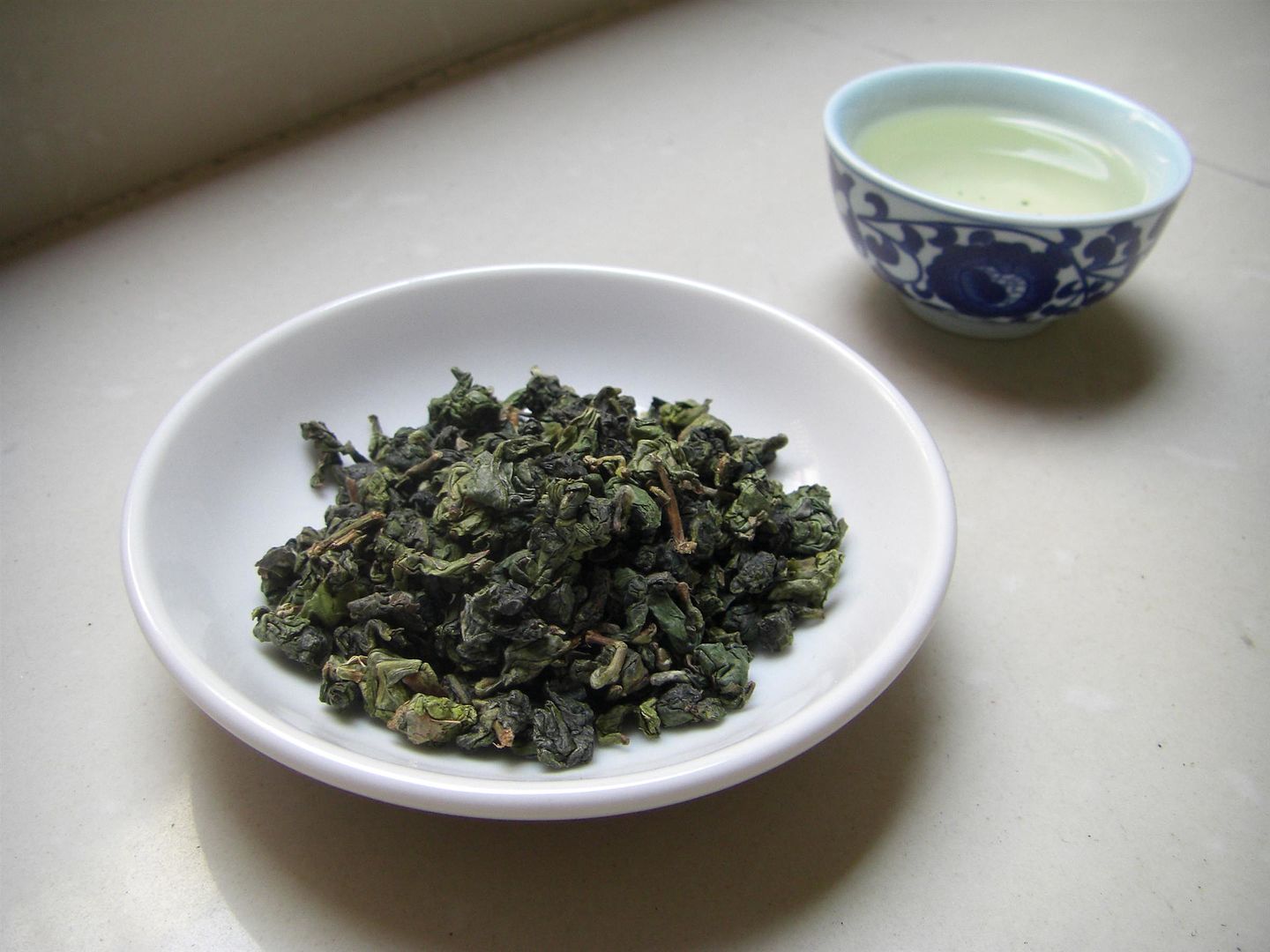
Oolong tea 乌龙茶, which is made from large leaves of a tea bush, in Anxi County, Fujian Province 福建省 安溪 县. The Chinese name for tea is 铁 观音. This variety began to be made back in the 7th century. The unique taste of the tea combines muscat notes and frosty freshness, the aroma intoxicates with notes of plum and citrus. Like all Chinese teas, oolong is brewed several times and retains its flavor and aroma for up to 10 infusions.
Chinese tea “Bilochun” 碧螺春
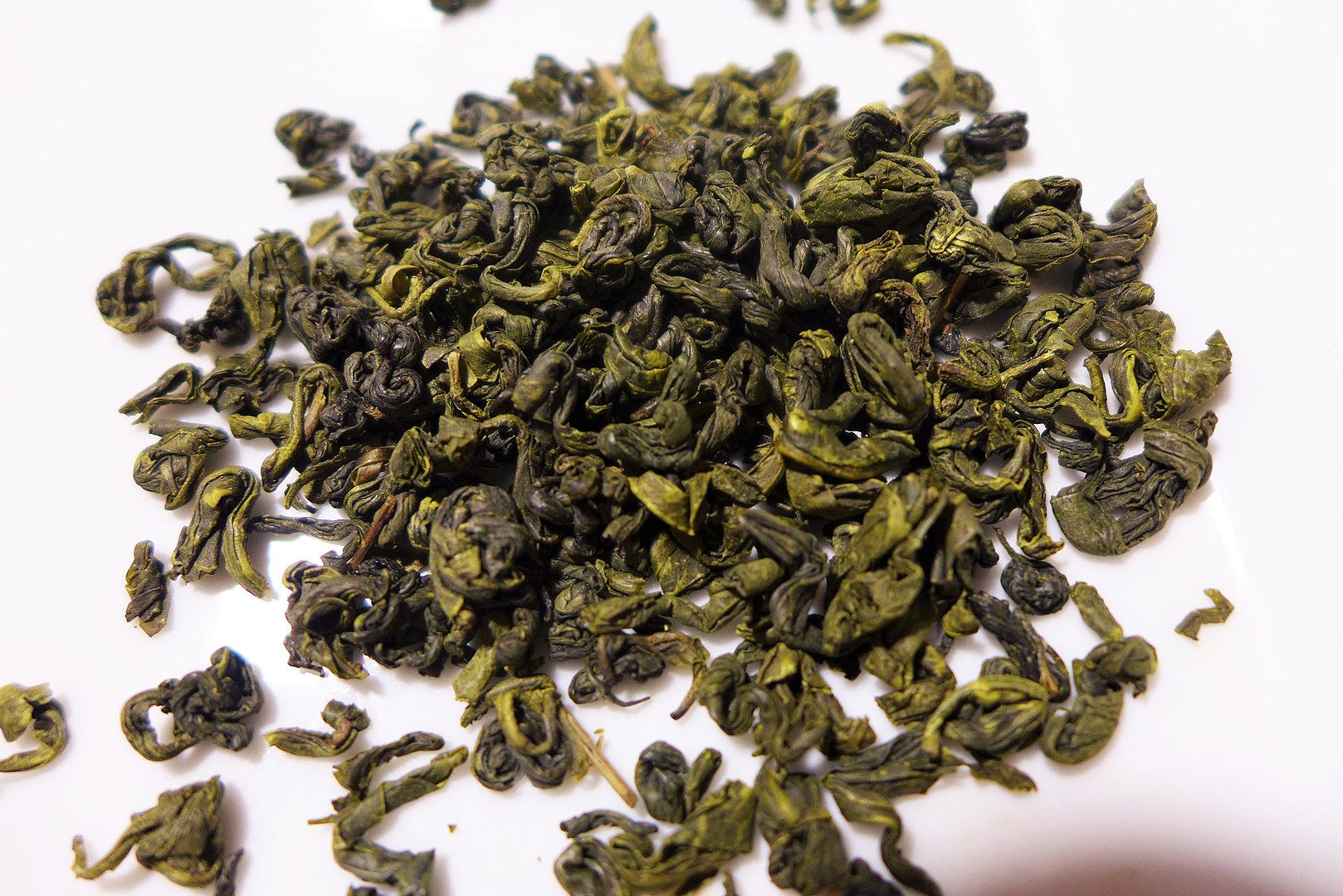
Image by: CC BY-SA 4.0 / Qirille
Its name translates as “Emerald spirals of spring”. The full name in Chinese is 碧螺春. This is green tea 绿茶, for which the first young leaves are harvested, and only the blossoming buds. Due to the production technology, dry tea leaves are rolled into a spiral – they are rolled by hand.
And when brewing, the spirals slowly unfold – therefore, connoisseurs of Chinese tea recommend brewing it in glassware to watch the bizarre “dance of tea leaves”. This tea has the most intense aroma with notes of herbs and flowers.
Xi Hu Long Jing Chinese Tea 西湖 龙井茶
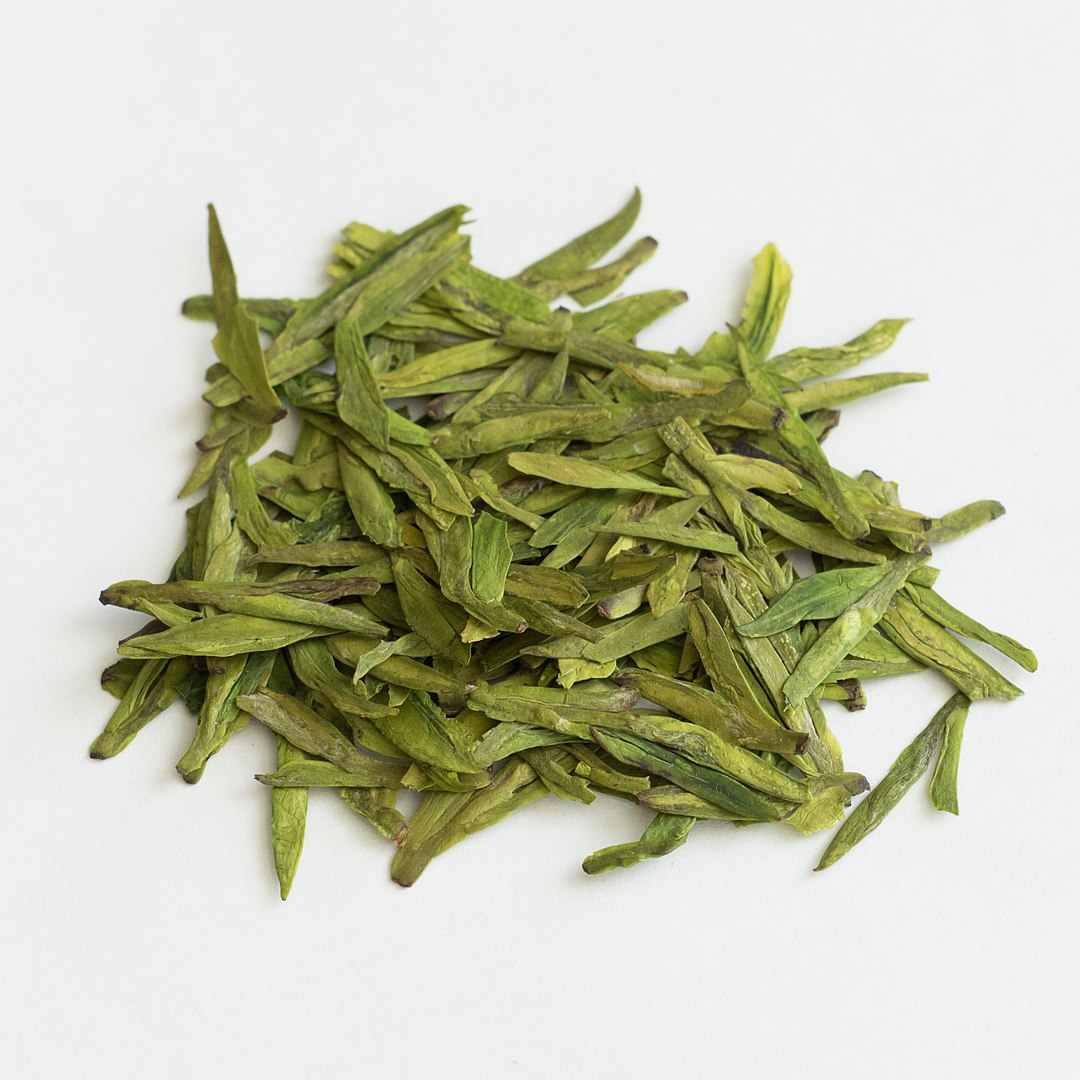
Image by: CC BY-SA 4.0 / Difference engine
The best variety of green tea 绿茶. The name of this Chinese tea translates as “Dragon’s Well from Lake Xi Hu”. The full name in Chinese is 西湖 龙井茶. Tea leaves are harvested only once a year; in spring, only the tops of the shoots are used. The tea is made entirely by hand, so its lots are small and this is the most expensive variety. Even in China, getting it is not easy.
Chinese tea “Oolong Da Hong Pao” 乌龙 大 红袍

Image by: CC BY-SA 3.0 /
One of the oldest varieties of oolong 乌龙茶. It is obtained from leaves collected from old trees. Only mature leaves are taken, which ferment longer than other oolong teas 乌龙茶. After fermentation, the leaves are manually rolled, dried and heated over coals.
This oolong 乌龙茶 gives an infusion of turquoise hue, with aromas of dried fruits and smoke. The taste of the infusion is velvety, tart and sweet, with a raspberry aftertaste and notes of black currant. The full name in Chinese is 乌龙 大 红袍. The name of this type of Chinese tea is translated into English as “Big Red Robe”.
The best Chinese teas – types of 中国 茶叶 品种
The above are the best and most expensive varieties of Chinese tea 中国 茶. You can see that they all belong to different species. Let’s list the famous types of Chinese tea:
- Oolong 乌龙茶
- Puer 普洱茶
- White tea 白茶
- Yellow tea 黄 茶
- Red tea 红茶
- Green tea 绿茶
The large number of types does not imply the use of different types of tea leaves. The whole difference is in the types of leaves and their processing.
White tea 白茶
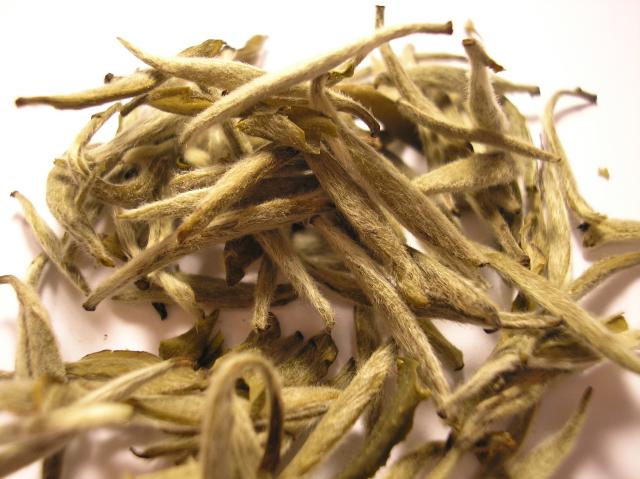
Image by: CC BY-SA 3.0 / Iateasquirrel
All of its varieties are considered elite, because only buds covered with white fluff are used for tea production (hence the name of the species). White tea began to be made in China 900 years ago.
It is believed to eliminate the “internal heat” and clarify the mind, therefore it helps with many diseases. The theory of ancient Chinese medicine is also confirmed by modern medicine. For example, 中国 白茶 white Chinese tea contains many trace elements, biological compounds, and vitamins that have soothing, strengthening properties.
The buds are harvested in mid-March, early in the morning, only by hand, in clear sunny weather. In the production of white tea 白茶, the collected buds are dried outdoors and then dried indoors for three days.
Human exposure is minimal, processing is also minimal, so tea retains all the beneficial substances. The taste of tea is delicate, refreshing, with notes of melon, peach, honey, flowers. Color – pale yellow.
Green tea 绿茶

Image by: CC BY-SA 3.0 /
For its production, buds or buds with one or two leaves, or young leaves are collected. The type of tea depends on the type of raw material. The highest is considered to be made of tips (kidneys).
In the production of green tea 绿茶 raw materials are dried in the fresh air for 3-5 hours. Then the leaves and buds are fried for 3-10 minutes, with constant stirring. Then the leaves are shaped (rolled) and dried over coals. Green tea 绿茶 has a richer taste and aroma, contains a large amount of vitamins, trace elements, essential oils and polyphenols.
Yellow tea 黄 茶
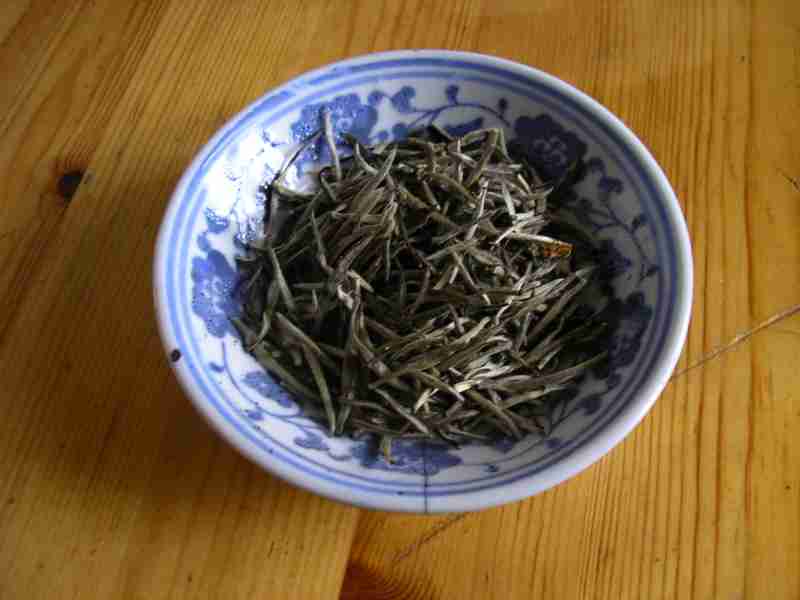
Image by: CC BY-SA 3.0
The second name of the species is turquoise tea or in Chinese 青茶. On the other hand, the drink really has a noble turquoise hue. It is a semi-fermented tea that falls between yellow and red varieties.
When processing tea leaves, only part of the surface is fermented, and the inner layers are not fermented. Real oolong tea 乌龙茶 is produced in Taiwan 台湾, in the Chinese province of Guangdong 广东 省 and Fujian 福建省. For production, juicy ripe leaves are taken, which, after collection, wither within an hour.
After the raw material is fermented in the shade, stirring occasionally to achieve uneven fermentation. The process is stopped by roasting the tea, which is carried out in two stages, between which the leaves are twisted by hand. In oolong tea 乌龙茶, all leaves must be whole, no crumb or broken leaves are allowed. Oolong tea 乌龙茶 has a bright multifaceted aroma, notes of spices, berries, honey. The taste is rich, soft.
Red tea 红茶
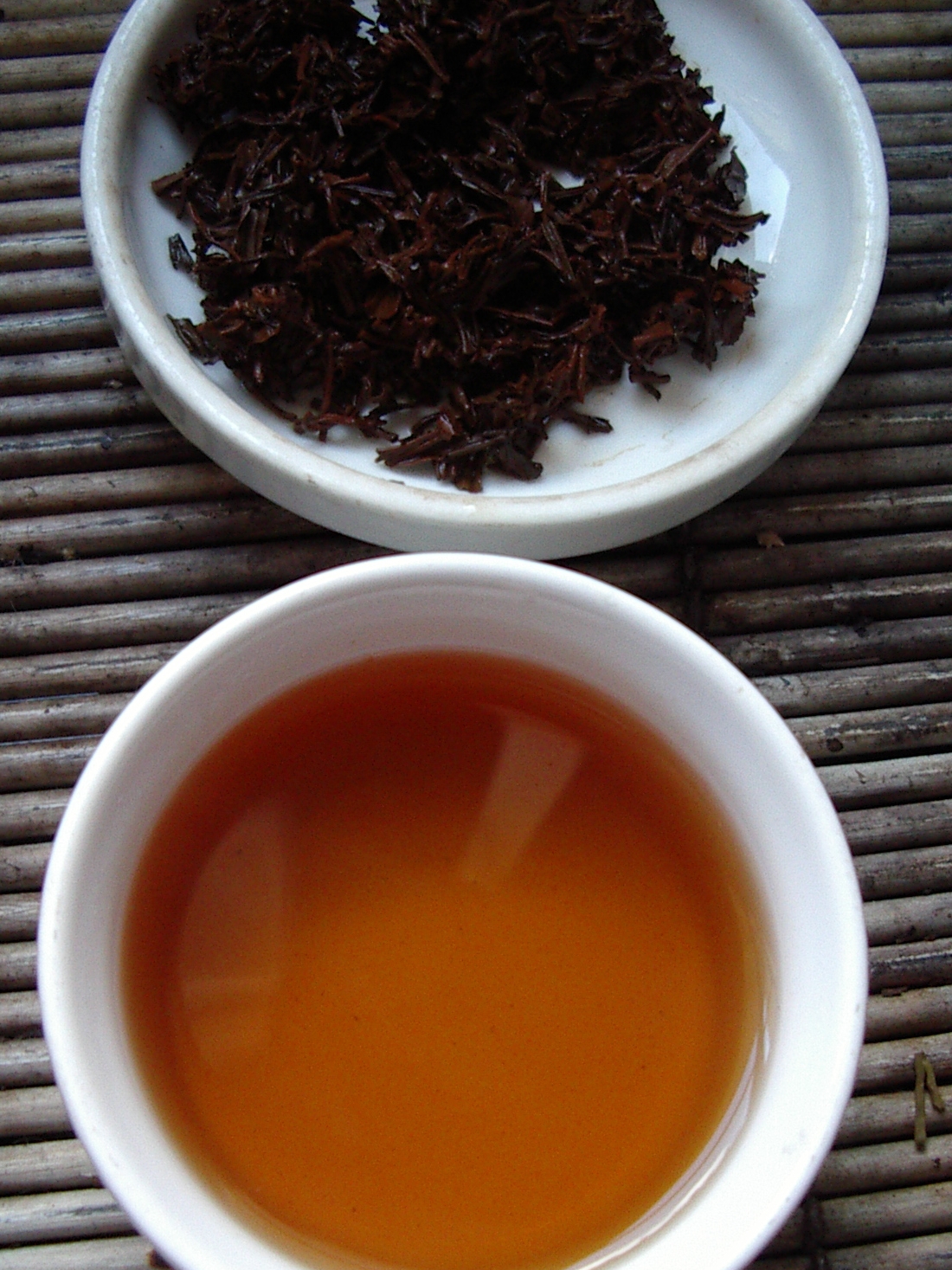
Image by: CC BY-SA 3.0 / Laubrau
This is what we call “black” by the color of the dry brew. But in China it is red tea 红茶, according to the color of the infusion. This is a fermented species that undergoes a full fermentation – it lasts about 4 hours. The color of the drink is rich, red, the taste is soft, velvety, tart, but without bitterness. The tea leaves a floral, pine or honey-fruity aftertaste. It invigorates well, will appeal to those who are just starting to get acquainted with Chinese teas.
Pu-erh tea 普洱茶

Image by: CC BY-SA 3.0 / – Pu-erh tea allstars
A post-fermented species that is produced from both mature leaves and buds. Distinguish between Shen Puer (young) 生 普洱茶 and Shu Puer 熟 普洱茶. Shen Puer 生 普洱茶 varieties are produced by long-term withering (natural aging) and drying, after which the leaves are steamed and pressed in this form.
Sheng Puer 生 普洱茶 has a bright taste and aroma with hints of fruits and berries. It is recommended to buy tea older than 3 years – bitterness leaves from it, the taste softens, acquires honey notes. A special feature of Sheng Puer 生 普洱茶 is continuous fermentation, which does not stop even after pressing.
Shu Puer tea 熟 普洱茶 is obtained in a different way. After the leaves have withered, they are debated. High humidity and heat promote the development of bacteria of the genus Aspergillus, which ensure rapid fermentation. Due to this, Shu Puer 熟 普洱茶 has a characteristic earthy aftertaste with notes of chocolate, prunes, nuts.
Chinese milk tea 中国 奶茶: a special kind
Chinese milk tea 中国 奶茶 or milk oolong 奶香 乌龙 is a really special kind of tea. Real milk oolong 奶香 乌龙 is made only in Taiwan 台湾, and only from Golden Flower tea bushes. It is not known for certain how exactly the tea got its characteristic creamy flavor. But changes in the composition of the soil, climate greatly affect the taste and aroma of tea. And most likely the appearance of milk oolong 奶香 乌龙 is associated with such changes.
But since they did not succeed in repeating them, and customers continued to demand tea with a milky-creamy tint, the manufacturers had to add the usual milk flavoring to it. There are versions that tea bushes are watered with milk, or the collected leaves are steamed over boiling milk.
But milk in China is not the cheapest and most common product, so the versions are implausible. Although beautiful. But the reality is more prosaic – flavoring is added to oolong 乌龙茶. This does not make tea worse, because oolong 乌龙茶 in itself is an elite type, with useful properties and rich taste.
And the flavoring agent used is safe for health, and allows you to get the very shade of cream that many people like so much. Why not.
The best Chinese teas: what determines the taste of tea?
Studying the history of Chinese tea 中国 茶, you will notice that certain varieties have been produced in the same area for many centuries. And there is an explanation for this. Each area has its own soil composition and climatic conditions.
It is they who give the tea leaf one or another taste. Therefore, real oolong 乌龙茶 is produced only in Taiwan 台湾, it was there that it was originally made. In China, it is produced only in two provinces, where there are similar climatic conditions and soil composition.
But the organoleptic properties of Taiwanese and Chinese oolong are still different, even though they are made from the leaves of the same tea bush. This applies to any kind and type of tea. But other factors also affect the taste, aroma of the drink:
- Collection time – elite varieties are harvested from March to April;
- The weather during the collection of leaves should be sunny and quiet;
- Assembly type – manual or mechanized;
- Processing type – traditional (by hand) or using ovens, drying cabinets;
- storage.
The best varieties are made only by hand, so their lots are small and the cost is high. But you shouldn’t think that mechanized teas are much worse – they also have useful properties, multifaceted taste and aroma.
And if you are not a gourmet who can discern the smallest nuances of taste, you will not feel much difference. For the buyer, tea storage is more important. The tea leaves do not react well to humidity, exposure to ultraviolet radiation, and perfectly absorbs odors. Therefore, any kind of tea is stored in an opaque, tightly closed container in a dry place.
Chinese tea: tea gallery
When buying tea, you need to pay attention not only to its name, description. The shape and color of dry tea leaves speak volumes. Therefore, this is something to learn before purchasing. Knowing what oolong 乌龙茶, Silver Needles 银针 茶, or Sheng Puer 生 普洱茶 look like, you can determine the quality and authenticity of the teas offered in the store. When choosing a variety, pay attention to:
- Tea leaves – they should only be whole;
- The aroma of dry brew is intense, corresponds to the characteristics of the variety, there are no foreign impurities;
- Scrap, twigs, dust – absent;
- Uniform color.
When brewing good tea, a transparent infusion with a rich color is obtained. High-quality Chinese tea 中国 茶 does not lose its taste and aroma after 5-6 spills (brewing method).
The best Chinese teas for beauty connoisseurs
Another type that deserves attention is related teas. For their production, only the buds and half-open top leaves of the tea bush are used. Raw materials are processed on the day of collection.
Bound tea is created on the basis of white tea 绿茶, green tea 绿茶, less often red tea 红茶. Its peculiarity is shaped balls, pyramids, bud, flower, and so on. To create the shape, the leaves are collected in bunches and shaped by hand.
Many species include flowers and fruit pieces. The peculiarity of related teas is not only their taste and aroma, but also the brewing process. It is worth brewing the drink in a transparent container to admire the process of blooming leaves and flowers. And not just blooming – a unique picture is created in a cup or teapot.
Best Chinese Teas: Ranked 2020
If we talk about the ranking of related teas, then the list of the top five includes:
- Dragon Pearl Chinese tea, full name in Chinese 龙珠 茶. Green bound tea, made from young leaves and buds, bound into small pearls. This variety is scented with white jasmine flowers. When brewing, the “pearls” open up and turn into small white leaves. The taste of the infusion is fresh, rich, with a bright jasmine shade.
- Tea from China “Jasper Bunny”, Chinese name 玉兔 茶. Also green tea tied in the shape of a hare’s head. Inside the bundle there are flowers of clover, jasmine and calendula. The drink has a tart taste and rich floral aroma.
- “Golden Pagoda” or in Chinese 金塔 茶. It is tied from large-leaf red tea and Golden Needles, and is hand-shaped into a pagoda. When brewed, the “pagoda” blooms with a peony flower. The infusion is red in color with a golden hue, soft fruity taste and fruity-floral aroma.
- Chinese tea “Shou Mei” or “Elder’s Eyebrows”, original name 寿眉 白茶. Perennial white tea 白茶 which produces a clear, ivory-colored infusion with a delicate floral aroma.
- “Yu Long Tao” or in the original language 玉龙 涛 茶. White knitted tea with clover flower inside. The drink has a delicate, soft taste with a touch of meadow flowers.
The related teas are a work of art. They combine harmonious taste, sophisticated multifaceted aroma and beauty. You can endlessly admire how the tea blossoms, so even the brewing process becomes a pleasant ritual.
Summarize
The best Chinese teas can be called a work of art. Each variety has a long history and deserves attention. Regardless of whether you like subtle refined taste or rich tart, fruity, floral or honey, herbal notes – you will find the variety to your taste.
If you are used to regular black tea and want to switch to Chinese, start with red tea 红茶, try yellow tea 黄 茶 and Shen Puer tea 生 普洱茶. Love green – you will love oolong tea 乌龙茶, white tea 白茶. For connoisseurs of strong tea, Pu-erh tea 普洱茶, varieties of red tea 红茶 are suitable.
